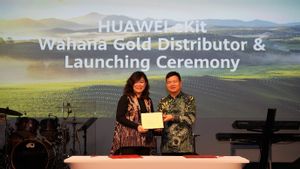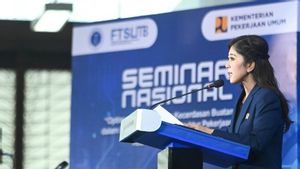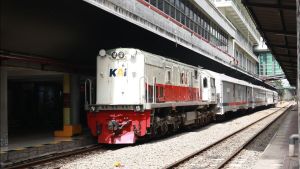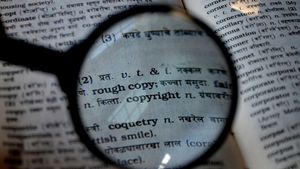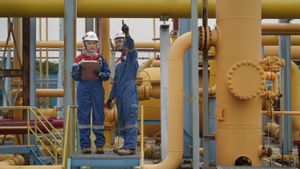JAKARTA - A very amazing celestial body, an asteroid, is known to have a bad impact on Earth. It could even potentially destroy the planet someday. To that end, NASA has spent the last month preparing for this.
The preparation was based on hypothetical responses regarding the asteroid impact in Winston-Salem, North Carolina. Fortunately, however, the substantial regional damage is only part of the first simulation designed to assess the capabilities of the United States (US), how they respond effectively to asteroid threats and impacts on Earth.
In this exercise NASA is not alone, it is together with other federal, state and local agencies, to conduct the fourth of the so-called Planetary Defense Interagency Tabletop Exercise.
"Although NASA has previously led and participated in simulations of asteroid impact scenarios, this particular exercise marks the first time that end-to-end simulations of this type of catastrophe have been studied. This includes assessing scenarios from the discovery of an asteroid impact threat through its hypothetical after-effect with Earth." planetary defense officer at NASA, Lindley Johnson.
This exercise allows governments to identify and resolve potential problems, before real-world action to respond to the threat of an asteroid impact is actually needed.
Not only that, exercises are also carried out to address the activities referred to in the National Near-Earth Object Preparedness Strategy and Action Plan, which outlines the country's strategy to deal with the dangers posed by Near-Earth Objects (NEO).
Over two days, the exercise works through a detailed hypothetical scenario in which astronomers encounter a simulated asteroid, 2022 TTX, which has a possible impact on Earth six months after its discovery.
As more information was revealed to trainees via a series of modules, it became clear the (simulated) asteroid, which was large enough to cause severe damage, would indeed impact Earth near Winston-Salem, North Carolina.
However, the specific details of the asteroid such as its size and therefore the energy of the impact and the detailed damage it will cause remain highly uncertain until several days before the simulated asteroid impact.
This mimics how the information can be revealed in the real world due to limited capabilities. This includes ground-based radar technology, which requires objects to be in relatively close proximity to Earth for current imagery and analysis facilities.
As such, trainees remain in close coordination across federal and state levels of government to ensure all know how and where to access information as it becomes available to planetary defense experts.
NASA said the completion of the interagency asteroid drill marks another important milestone for the agency's efforts in planetary defense, which continue to improve.
Later this year, NASA's Dual Asteroid Diversion Test (DART) will also be the world's first mission to demonstrate technology to defend Earth against a potential asteroid impact.
DART, which is currently on its way to a well-known asteroid that poses no threat to Earth but will have a direct impact on the Moon is changing the asteroid's motion in space so that it can be measured accurately using ground-based telescopes.
"The impact of an asteroid on our planet has the potential to be the only natural disaster that humanity is capable of accurately predicting and preventing," Johnson said.
Meanwhile, DART is designed to validate computer models of asteroid deflection and demonstrate kinetic impact deflection as one of the feasible methods to respond to future asteroid threats.
However, for a technology like DART to work, it is critically important to find impact threats with sufficient warning times of years or up to a decade in advance.
As such, development continues on the agency's Near-Earth Object Surveyor (NEO Surveyor) mission, which will be an infrared space telescope and specifically designed to accelerate NASA's ability to find and characterize most potentially hazardous NEOs, including those that may approach Earth from the sky. afternoon.
The English, Chinese, Japanese, Arabic, and French versions are automatically generated by the AI. So there may still be inaccuracies in translating, please always see Indonesian as our main language. (system supported by DigitalSiber.id)




